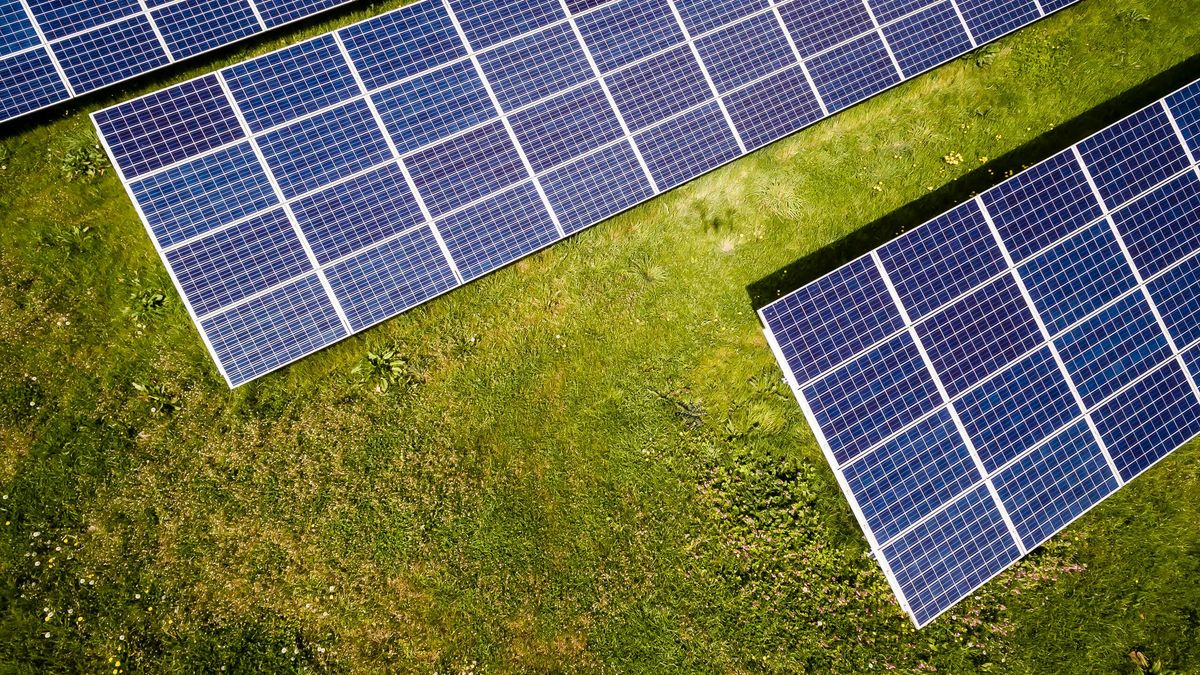Table of Contents
Principles and Practices of Sustainable Agriculture

Soil Conservation Techniques
Sustainable agriculture plays a crucial role in maintaining the health and productivity of the soil. Conservation agriculture is a cornerstone of this approach, emphasizing practices that protect the soil and enhance its fertility. Techniques such as permanent mulch cover, reduced tillage, and extended crop rotations are fundamental to this practice, helping to prevent erosion and improve biodiversity.
Crop rotation and cover cropping are pivotal in replenishing soil nutrients and managing pests and diseases. By rotating crops and planting cover crops like legumes and grasses, farmers can maintain soil structure and fertility, which are essential for long-term agricultural productivity.
Incorporating trees through agroforestry not only provides benefits like shade and windbreaks but also plays a significant role in improving soil structure and preventing erosion. This integration of trees into farming systems is a testament to the synergy between agricultural practices and environmental stewardship.
Here are some key soil conservation techniques:
- Permanent mulch cover to protect soil surface
- Reduced tillage to minimize soil disturbance
- Crop rotations to balance nutrient uptake and replenish the soil
- Cover cropping to prevent erosion and enhance soil health
- Agroforestry to combine agricultural and forestry practices
Water Management and Conservation
Effective water management and conservation are critical to sustainable agriculture. Adopting water-efficient irrigation systems is a key strategy that can lead to significant water savings and ensure the availability of this precious resource for future generations. Additionally, farmers can participate in local water conservation projects, which often provide support and resources for implementing sustainable practices.
Efficient water use is not only about reducing the amount of water used; it’s also about maximizing the productivity of every drop. This can be achieved through various techniques, such as:
- Utilizing drip irrigation to deliver water directly to plant roots
- Implementing rainwater harvesting systems to capture and store rainwater
- Scheduling irrigation during cooler times of the day to reduce evaporation
By integrating crops, trees, livestock, and functional biodiversity, sustainable agriculture promotes an agroecology-based diversified farming system that contributes to water conservation.
Conservation and restoration initiatives support the health of entire ecosystems. Establishing protected areas and implementing habitat restoration programs are essential for maintaining the natural water cycle and preventing habitat loss through deforestation.
Promoting Biodiversity in Farming
Biodiversity plays a crucial role in mitigating the effects of climate change and building resilience in agricultural systems. By fostering a variety of species, sustainable farming methods support diverse ecosystems, which in turn provide habitats for wildlife and preserve the genetic diversity essential for food security.
By enhancing biodiversity, we can bring back beneficial ecosystems that directly benefit our farmers. We recognized the importance of pollinators and took steps to increase biodiversity by reintroducing native bees.
Collaboration with local conservation organizations is a key strategy to protect and enhance biodiversity around farms. This partnership approach ensures that farming practices are aligned with regional conservation goals, leading to more effective outcomes. Additionally, implementing a comprehensive waste management system, including recycling and composting, contributes to a healthier environment and supports biodiverse habitats.
While no single practice can enhance all taxonomic groups, overall less intensive agricultural practices are beneficial to biodiversity. This finding underscores the importance of adopting a variety of sustainable practices tailored to specific biomes and ecological requirements.
Organic Farming: A Path to Sustainability
Organic farming stands as a beacon of sustainability in the agricultural sector. Compared with conventional agriculture, it uses fewer pesticides and is known for reducing soil erosion, which contributes to the preservation of our water resources by decreasing nitrate leaching into groundwater and surface water bodies.
Organic farming is not just about avoiding synthetic inputs; it’s a holistic approach that nurtures the ecosystem. It relies on organic waste utilization, biofertilizers, and beneficial microbes to enhance sustainability and minimize environmental impact.
The economic aspect is also compelling. Despite perceptions of lower yields, organic farming can be more profitable due to the high demand for organic products. Consumers are increasingly seeking locally sourced, pesticide-free, and certified organic goods, driving the market in a positive direction. The integration of organic methods with other farming systems can lead to a truly sustainable approach to food production, ensuring long-term productivity and resilience.
The Role of Technology in Advancing Sustainable Agriculture

Precision Agriculture: Maximizing Efficiency
Precision agriculture represents a paradigm shift in farming, where technology plays a pivotal role in optimizing resource use and enhancing crop yields. By employing advanced tools such as GPS mapping, sensors, and data analytics, farmers can apply inputs like water, fertilizer, and pesticides with unprecedented precision. This targeted approach not only reduces waste but also boosts efficiency, leading to more sustainable farming practices.
Precision agriculture is not just about the technology; it’s about integrating these tools into a system that supports informed decision-making. The benefits are manifold, including improved soil structure, reduced environmental impacts, and the ability to make real-time adjustments to farming strategies.
- Key Benefits of Precision Agriculture:
- Optimized input application
- Minimized environmental footprint
- Enhanced crop yields
- Improved soil health
By harnessing the power of precision agriculture, we can achieve sustainable intensification, which allows for higher productivity without additional land conversion or environmental compromise.
Renewable Energy Integration in Farming
The integration of renewable energy into farming practices is a cornerstone of sustainable agriculture. Renewable energy technologies offer the potential to increase agricultural productivity through improved access to reliable power sources. Solar panels, wind turbines, and biogas systems can provide farmers with the energy needed for irrigation, crop processing, and climate control in greenhouses.
Renewable energy sources not only contribute to a reduction in greenhouse gas emissions but also enhance energy security for rural communities. By reducing dependence on fossil fuels, farms can achieve greater economic stability and resilience against fluctuating energy prices.
- Solar energy: Harnessing sunlight to power farm operations.
- Wind energy: Utilizing wind turbines to generate electricity.
- Biogas: Converting organic waste into energy and fertilizer.
- Hydroelectric power: Using water flow to produce energy.
The shift towards renewable energy in agriculture is essential for building a sustainable and self-sufficient farming ecosystem.
Data-Driven Farm Management
The advent of data-driven farm management has marked a significant shift in sustainable agriculture. By leveraging digital technologies, farmers can now make informed decisions that lead to more efficient and environmentally friendly practices. Precision is the cornerstone of this approach, allowing for the meticulous monitoring and management of resources.
- Real-time soil and crop health monitoring
- Optimized irrigation schedules
- Targeted pest control
- Enhanced yield predictions
The integration of data-driven techniques ensures that every drop of water, every ounce of nutrient, and every minute of labor is utilized to its fullest potential, reducing waste and increasing sustainability.
The benefits of this smart farming are not just environmental but also economic. Farmers gain access to real-time market information, which can lead to better pricing, fairer trade, and improved income opportunities. The transition to data-driven agriculture, however, is not without its challenges. It requires investment in technology and training, as well as ongoing support to ensure that farmers can fully harness the potential of these innovative tools.
Innovations in Climate-Smart Agriculture
In the face of escalating climate challenges, innovations in climate-smart agriculture are pivotal for ensuring a resilient food supply. These innovations are not only about adopting new technologies but also about reviving and integrating traditional practices that are inherently sustainable.
Agroecology, a key component of climate-smart agriculture, combines modern scientific knowledge with indigenous wisdom to create food systems that are both productive and sustainable. This approach emphasizes the importance of working with nature, rather than against it, to achieve agricultural resilience.
- Use of drought-resistant crops
- Implementation of agroforestry systems
- Soil carbon sequestration methods
- Water-saving irrigation technologies
By strategically implementing these practices, farmers can significantly reduce their environmental impact while maintaining or even increasing crop yields.
The transition to climate-smart agriculture requires a multifaceted approach, involving education, sustainable intensification, and the empowerment of farmers to adopt these innovative practices. It is a journey towards a more secure and sustainable future for our global food systems.
Environmental and Economic Benefits of Sustainable Agriculture

Enhancing Soil Productivity and Health
Improving soil productivity is fundamental to sustainable agriculture. Crop rotation is a key strategy, as it helps to replenish soil nutrients, reduce pests and diseases, and maintain the health of the soil. Additionally, the practice of cover cropping with legumes and grasses prevents soil erosion, suppresses weeds, and enhances fertility.
Sustainable intensification is another approach that optimizes farming practices for higher productivity without additional land conversion or environmental compromise. Techniques like precision agriculture and integrated pest management are part of this strategy, allowing farmers to enhance yields while reducing inputs such as water and pesticides.
By understanding and implementing sustainable practices, we ensure that agricultural productivity aligns with environmental stewardship.
Livestock integration into crop systems also contributes to soil health by utilizing crop residue and reducing waste. The flexibility in feeding and marketing within mixed farming systems helps to mitigate price fluctuations and optimize labor utilization. Organic farming, which relies on natural methods and avoids synthetic inputs, plays a significant role in maintaining soil health and ensuring long-term sustainability.
Reducing Carbon Footprint and Combating Climate Change
Sustainable agriculture plays a pivotal role in the fight against climate change by implementing practices that sequester carbon in the soil and reduce greenhouse gas emissions. The adoption of renewable energy sources such as solar, wind, and hydroelectric power is essential for farms aiming to lower their carbon footprint and contribute to a low-carbon economy.
By focusing on soil health and integrating renewable energy, sustainable agriculture not only mitigates ongoing warming trends but also ensures energy savings and promotes public health safety.
Efforts to minimize waste and promote recycling are also crucial. These practices align with the principles of a circular economy, which emphasizes the importance of resource conservation and waste reduction. Advocacy for policies that support these initiatives is a key step towards environmental stewardship and a sustainable future.
- Transition to renewable energy
- Enhance soil carbon sequestration
- Advocate for supportive policies
- Promote waste reduction and recycling
Economic Viability for Farmers
Sustainable agriculture offers a pathway to economic viability for farmers by focusing on long-term profitability and resilience. Optimizing resource utilization and minimizing input costs are key strategies that lead to increased yields and reduced expenses. By improving practices such as crop rotation and soil management, farmers can enhance their operations’ sustainability.
Economic sustainability is not just about immediate gains but also about protecting against future economic fluctuations and risks. This approach ensures a stable income for farmers and contributes to the overall health of the agricultural sector.
- Stable employment and fair wages
- Improved living and working conditions
- Consideration of local needs and socio-cultural values
Sustainable agriculture intertwines economic stability with environmental stewardship, creating a balanced ecosystem where both the land and the farmer thrive.
Strengthening Community and Food Security
Sustainable agriculture plays a pivotal role in fortifying community resilience and ensuring food security. By fostering local employment and skill development, sustainable practices contribute to a more robust and self-sufficient community. Local empowerment is achieved through providing training opportunities and promoting gender equality, which in turn, creates a diverse and dynamic workforce.
Local Employment Initiatives:
- Prioritizing local hiring to boost the economy.
- Offering skill development programs to enhance agricultural productivity.
Women’s Empowerment in Agriculture:
- Encouraging women’s participation in all agricultural roles.
- Launching support and training initiatives for women farmers.
Sustainable agriculture intertwines environmental stewardship with community empowerment, creating a synergy that enhances land conservation and nurtures local economies.
The economic viability of farmers is closely linked to community prosperity and the availability of nutritious food. By integrating education and sustainable intensification, communities can build a resilient food supply that withstands the challenges posed by climate change and global market forces.
Challenges and Barriers to Implementing Sustainable Agriculture

Overcoming Economic and Policy Obstacles
Achieving economic sustainability in agriculture often hinges on the ability to improve crop rotation and soil management, which can lead to increased yields and long-term profitability. By optimizing resource utilization and minimizing input costs, farmers can create a more resilient food ecosystem.
Economic and social equity is also a critical component, as sustainable agriculture should promote stable employment and fair wages. This approach fosters not only economic viability but also addresses the sector’s vulnerability to economic fluctuations.
Sustainable agriculture must consider local needs, blending traditional knowledge with innovative practices to ensure both ecological sustainability and social equity.
To truly unlock the potential of sustainable agriculture, a holistic approach is necessary—one that encompasses ecological sustainability, economic viability, and social equity. Continued research and the integration of both traditional and frontier technologies are essential steps in this direction.
Addressing the Knowledge and Technology Gap
Bridging the knowledge and technology gap is essential for the widespread adoption of sustainable agriculture practices. Farmers and agricultural organizations must have access to the latest ecological knowledge and technological advancements to improve their operations. This includes understanding the benefits of rotation or cover crops, which are gaining importance as sustainable alternatives.
To effectively implement new strategies, it is crucial to convert ecological knowledge into accessible formats such as manuals or reports. This ensures that the information can be easily updated and applied in a practical manner.
Collaboration with scientists, academics, and non-profit organizations facilitates knowledge exchanges that can lead to enhanced crop yield and quality. Education in digital agriculture and climate-smart approaches is also vital for building a resilient food supply and empowering farmers to adapt to climate change.
Balancing Productivity with Environmental Stewardship
Achieving a balance between high agricultural productivity and environmental stewardship is a complex challenge. Farmers must produce enough to meet demand while preserving the natural resources that future generations will depend on. This balance is not only crucial for sustainability but also for the long-term viability of farming itself.
- Soil Conservation: Maintaining soil health through crop rotation, cover cropping, and reduced tillage.
- Water Efficiency: Implementing drip irrigation and rainwater harvesting to minimize water waste.
- Pest Management: Using integrated pest management (IPM) to reduce chemical inputs.
- Crop Diversity: Planting a variety of crops to enhance biodiversity and resilience.
The key is to integrate sustainable practices into every aspect of farming operations, from the ground up. By doing so, farmers can create a system that supports both the environment and agricultural output.
However, the transition to such practices often requires initial investments and a willingness to adopt new methodologies. It is essential to provide support to farmers during this transition to ensure that the move towards sustainability is both economically viable and environmentally sound.
The Impact of Global Market Forces
The influence of global market forces on sustainable agriculture cannot be overstated. Global corporations shape agricultural practices by controlling seeds, inputs, and distribution channels. This control can lead to a homogenization of farming methods, often prioritizing short-term productivity over long-term sustainability.
- The dominance of a few corporations in the seed market
- The push for monoculture crops driven by global demand
- The challenge of accessing diverse markets for small-scale farmers
The interplay between global market forces and sustainable agriculture is complex, with profound implications for food security and environmental health.
While international institutions and trade agreements play a role in shaping these forces, it is crucial for local and regional players to assert their influence to promote ecological and financial sustainability. The urgency to address these impacts grows as we aim to ensure community well-being and ecosystem health in the face of a burgeoning global population.
Case Studies: Success Stories in Sustainable Agriculture

Community-Led Initiatives and Co-ops
Community-led initiatives and cooperatives play a pivotal role in fostering sustainable agriculture by integrating the social, economic, and institutional structures of local communities. These organizations prioritize community engagement and empowerment, creating a robust foundation for environmental stewardship.
Local Employment and Women Empowerment
- Prioritizing the hiring of local residents.
- Providing training and skill development opportunities.
- Actively promoting gender equality within the workforce.
- Creating avenues for women to participate in various roles within the agricultural value chain.
By focusing on local employment and women empowerment, cooperatives contribute significantly to the regeneration of local communities and ecosystems.
Environmental stewardship is another cornerstone of these initiatives, with efforts such as land conservation and reforestation being undertaken in collaboration with local communities. These practices are not only beneficial for the environment but also ensure the long-term viability of agricultural practices.
Transitioning to Organic: A Farmer’s Journey
The shift to organic farming is a transformative process that aligns with the increasing consumer demand for locally sourced, pesticide-free, and certified organic products. Organic farms prioritize long-term health and ecological balance, diverging from conventional practices that often emphasize immediate yield through chemicals and monocropping.
Organic farming, despite challenges, has proven to be more profitable over time, fostering environmental sustainability and providing nutritious foods with fewer pesticides.
However, transitioning to organic farming is not without its hurdles. Farmers may face initial yield declines, as seen in Sikkim, India, and struggle with the availability of natural inputs. These challenges underscore the need for support systems and knowledge sharing to facilitate a successful shift.
- **Challenges of Transitioning: **
- Yield Decline
- Shortage of Natural Inputs
- Weed and Pest Management
Combining organic techniques with other sustainable practices is essential for a holistic approach to food production. This integration is crucial to meet the global food needs while maintaining environmental stewardship.
Agroforestry: Blending Tradition with Innovation
Agroforestry, the practice of integrating trees and shrubs with crops and livestock, stands as a testament to the synergy between traditional knowledge and modern innovation. This approach not only enhances biodiversity but also improves soil health and carbon sequestration, offering a multifaceted solution to environmental challenges.
Italics are used to emphasize the importance of biodiversity conservation and the role of agroforestry in achieving it. By fostering a diverse array of plant and animal life, agroforestry systems can create more resilient agricultural landscapes capable of withstanding the pressures of climate change and pest outbreaks.
The integration of agroforestry practices into modern farming is a strategic move towards sustainable land use. It encapsulates the essence of environmental stewardship by marrying the wisdom of the past with the needs of the present.
The economic and ecological benefits of agroforestry are clear, yet its adoption requires a thoughtful consideration of local contexts and customs. Here are some key points to consider:
- Understanding the specific environmental conditions and cultural practices of a region
- Selecting appropriate tree species that complement agricultural crops
- Training farmers in the management of agroforestry systems
- Encouraging policies that support the transition to agroforestry practices
In conclusion, agroforestry exemplifies how tradition can inform innovation, leading to agricultural systems that are both productive and sustainable. As we face the pressing issues of food security and climate resilience, agroforestry offers a path forward that honors our heritage while safeguarding our future.
Urban Agriculture: Paving the Way for Sustainable Cities
Urban agriculture is revolutionizing the way we think about food production in densely populated areas. By utilizing innovative methods such as Aeroponic Tower Gardens, cities are able to grow fresh produce with minimal land use. These vertical gardens not only optimize space but also reduce water consumption, making them a beacon of sustainability in urban settings.
Urban agriculture initiatives contribute to community resilience, providing fresh, local produce while also creating green spaces that enhance the urban environment.
The success stories of urban farming are numerous, with Aeroponic Tower Gardens standing out for their efficiency and yield. Here’s a snapshot of their impact:
- Increased accessibility to fresh produce for city dwellers
- Reduction in transportation costs and emissions
- Creation of community engagement and educational opportunities
- Enhancement of local biodiversity through the introduction of plant varieties
These points underscore the transformative potential of urban agriculture in fostering sustainable cities and communities.
Vertical Farming Revolutionizing Agriculture: The Future — Sticky
Improving Livestock Health: Holistic Approaches to Animal Welfare — Sticky


